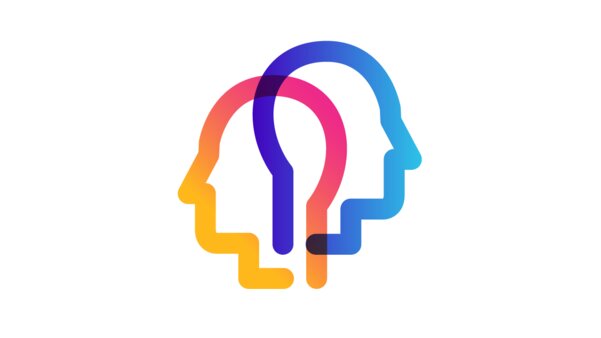Autism stigma and the role of ethnicity and culture
Published on 26 October 2016
Author: Dr Chris Papadopoulos
Dr Chris Papadopoulos, Principal Lecturer in Public Health at the University of Bedfordshire, explores the role that ethnicity and culture play in the stigma surrounding autism
Chris has created the London Autism Group, which is a closed and private Facebook group for anyone living in or near to London whose lives have been influenced by autism.
Stigma can be broadly viewed as the product of negativity towards a target group. This can take the form of:
- negative attitudes (e.g. authoritarianism, malevolence)
- negative knowledge (e.g. misconceptions, stereotypes)
- negative behaviours (e.g. discrimination, avoidance)
Stigma also has a number of other guises such as courtesy stigma and self-stigma (Papadopoulos, 2016).
The impact of stigma
The damage stigma causes is unnecessary, preventable, complex and extensive. It is an issue that needs careful and urgent attention as it can impact on upon a wide range of psycho-social phenomena such as:
- employment stigma and discrimination
- social and emotional loneliness
- hate crime
- mate crime
We also know that those who experience stigma are at a far greater risk of experiencing other problems such as depression and suicidality (Rusch et al, 2014). The result is therefore a double stigma, since mental health problems themselves remain highly stigmatised.
The role of ethnicity and culture
In the complex and what will likely be long battle against autism stigma, focusing on the roles that ethnicity and cultural context play in the production of stigmatising attitudes could be a particularly effective avenue. This is for several reasons outlined below.
Stigma and ethnicity
There is compelling evidence from the domain of mental illness stigma research that ethnicity and culture play key roles in moderating stigmatising attitudes. For example, Anglin et al’s (2006) study of nationally representative American samples found that African Americans held significantly stronger stigmatising attitudes towards mental illness compared to Caucasian Americans, even after controlling for age, political views, family income, and education.
Service provision
According to Grinker et al (2011), larger and more competent service provisions are in general more likely to exist within communities where there is a relatively greater level of understanding and awareness towards autism, compared to contexts where awareness is lower.
Therefore in particular cultural contexts where autism service provision is lower than compared with, for example, Western contexts, we should expect to find a relatively greater prevalence of stigma. This issue likely reflects and contributes to the problematic understanding of autism within particular cultures.
Collectivist cultures
Previous stigma research has found that collectivist cultures (which place priority on community interdependence and shared group norms and values) are generally more likely than individualist cultures (which place priority on personal independence, goals and values) to stigmatise people who deviate from the norm. This is partly because such people are more likely to be identified in the community due to high surveillance levels, which such cultures rely upon in achieving their goals of interdependence and group conformity (Papadopoulos et al, 2013).
There are two major consequences of this:
- Those who are identified as deviating from group harmony are vulnerable to being devalued, rejected and stigmatised.
- Families fear such stigmatisation and consequently hide their circumstances from their community. This in turn has a range of harmful consequences.
Health inequalities
We know ethnicity is a key determinant of health inequalities in England, where minority ethnic communities face poorer access to healthcare (The Kings Fund 2015) including autism services (Slade, 2014). If minority groups access services but experience poor cultural awareness from service providers, they may reject these services. Health care and autism service providers may also be unable to identify and diagnose autism due to language and cultural differences.
With progress hampered, services lose the opportunity to engage with the community, raise awareness and understanding of autism and mitigate against the production and effects of stigma.
Religion
Religion is an important component of culture. In the mental illness research domain we have empirical evidence that particular groups with higher levels of religious faith are more likely to stigmatise (Wisneski et al, 2009; Tzouvara & Papadopoulos 2014). This may be because greater levels of religious faith are found in communities where services are less available, inaccessible and/or are distrusted (sometimes due to poor cultural awareness).
This has been highlighted by Nwokolo (2010), who argues that within the Nigerian culture the influence of religiosity upon autism is particularly evident among rural communities where so few services for autistic children exist. Exorcism represents a more common intervention as a result of this.
Bankole (2016) agrees, arguing that in many African cultures autism is conceptualised as resulting from witchcraft and poor parenting. Similarly, Alqahtani (2012) has shown how Saudi Arabian parents tend to rely on cultural interventions involving religious healers, and attribute autism to the ‘evil eye’ which ascribes one’s misfortunes to ‘‘envy in the eye of the beholder’’ (Spooner 1970, p. 312).
While it is clear that autism stigma may exist across all socio-cultural contexts (Obeid et al, 2015), it is also reasonable to argue that the severity and means to which autism stigma occurs varies across different cultures. There are a range of practical measures that the autism community can employ that are likely to have an immediate positive effect. Some of these are described by Bankole (2016), such as professionals familiarising themselves with different cultures before meeting families and viewing themselves as partners who care.
However in tackling this area I believe that we need to heed the lessons from the mental illness stigma domain, and produce further rigorous research in order to better understand the theoretical propositions described above, and also to add to them. Only then can our interventions and policies be underpinned with strong theory and evidence, thus being best placed in the campaign against stigma.
Further information
- Watch an interview with Dr Chris Papadopoulos where he discusses autism and stigma













